Kaushik R. Chowdhury
AirNN: Neural Networks with Over-the-Air Convolution via Reconfigurable Intelligent Surfaces
Feb 07, 2022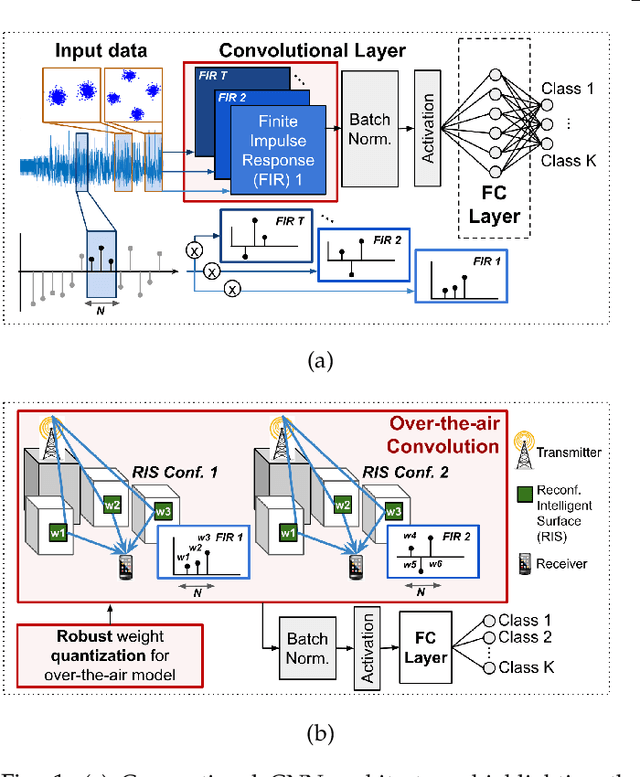
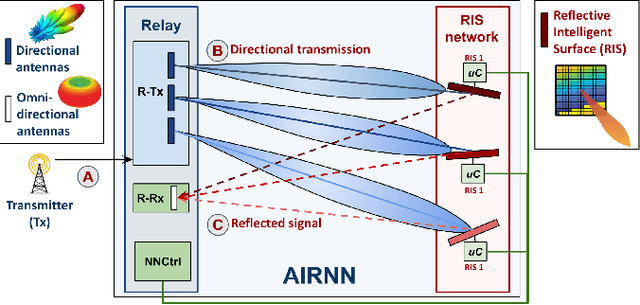
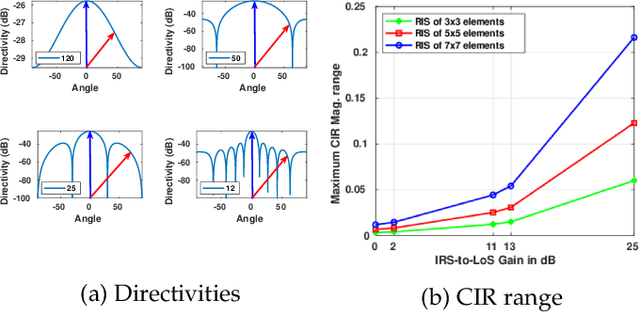
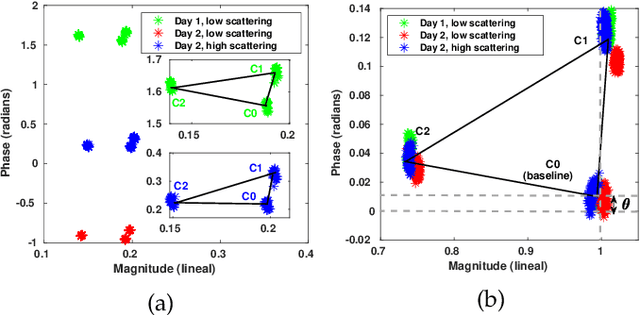
Abstract:Over-the-air analog computation allows offloading computation to the wireless environment through carefully constructed transmitted signals. In this paper, we design and implement the first-of-its-kind over-the-air convolution and demonstrate it for inference tasks in a convolutional neural network (CNN). We engineer the ambient wireless propagation environment through reconfigurable intelligent surfaces (RIS) to design such an architecture, which we call 'AirNN'. AirNN leverages the physics of wave reflection to represent a digital convolution, an essential part of a CNN architecture, in the analog domain. In contrast to classical communication, where the receiver must react to the channel-induced transformation, generally represented as finite impulse response (FIR) filter, AirNN proactively creates the signal reflections to emulate specific FIR filters through RIS. AirNN involves two steps: first, the weights of the neurons in the CNN are drawn from a finite set of channel impulse responses (CIR) that correspond to realizable FIR filters. Second, each CIR is engineered through RIS, and reflected signals combine at the receiver to determine the output of the convolution. This paper presents a proof-of-concept of AirNN by experimentally demonstrating over-the-air convolutions. We then validate the entire resulting CNN model accuracy via simulations for an example task of modulation classification.
Colosseum: Large-Scale Wireless Experimentation Through Hardware-in-the-Loop Network Emulation
Oct 20, 2021
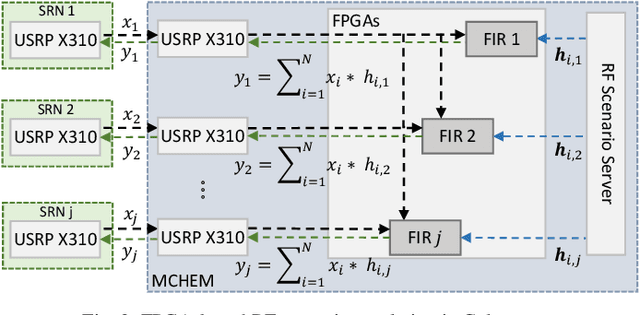
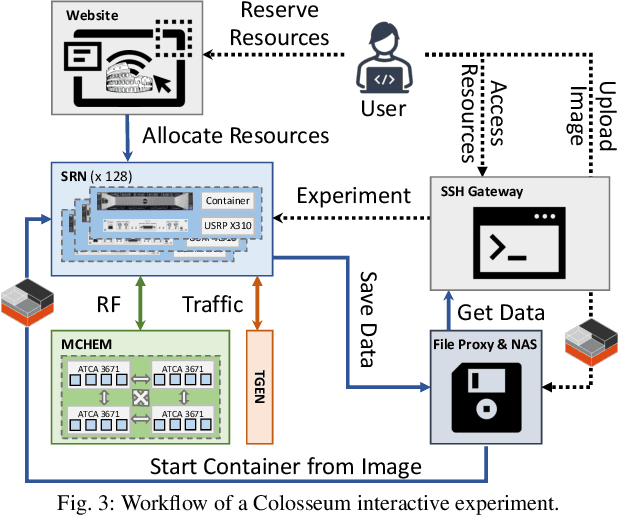
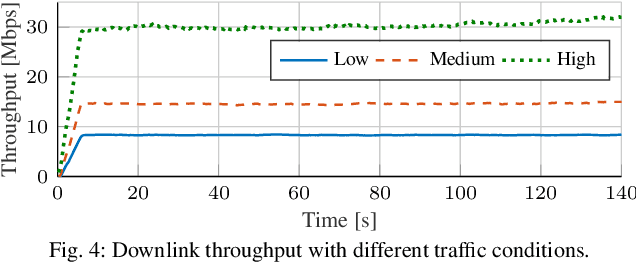
Abstract:Colosseum is an open-access and publicly-available large-scale wireless testbed for experimental research via virtualized and softwarized waveforms and protocol stacks on a fully programmable, "white-box" platform. Through 256 state-of-the-art Software-defined Radios and a Massive Channel Emulator core, Colosseum can model virtually any scenario, enabling the design, development and testing of solutions at scale in a variety of deployments and channel conditions. These Colosseum radio-frequency scenarios are reproduced through high-fidelity FPGA-based emulation with finite-impulse response filters. Filters model the taps of desired wireless channels and apply them to the signals generated by the radio nodes, faithfully mimicking the conditions of real-world wireless environments. In this paper we describe the architecture of Colosseum and its experimentation and emulation capabilities. We then demonstrate the effectiveness of Colosseum for experimental research at scale through exemplary use cases including prevailing wireless technologies (e.g., cellular and Wi-Fi) in spectrum sharing and unmanned aerial vehicle scenarios. A roadmap for Colosseum future updates concludes the paper.
 Add to Chrome
Add to Chrome Add to Firefox
Add to Firefox Add to Edge
Add to Edge